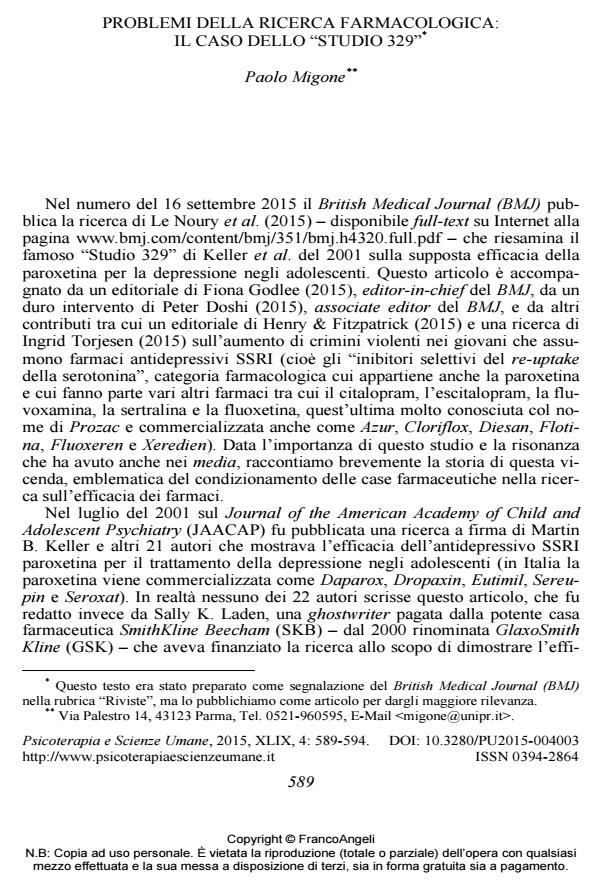Problems of drug research: The case of "Study 329".
Journal title PSICOTERAPIA E SCIENZE UMANE
Author/s Paolo Migone
Publishing Year 2015 Issue 2015/4
Language Italian Pages 6 P. 589-594 File size 50 KB
DOI 10.3280/PU2015-004003
DOI is like a bar code for intellectual property: to have more infomation
click here
Below, you can see the article first page
If you want to buy this article in PDF format, you can do it, following the instructions to buy download credits

FrancoAngeli is member of Publishers International Linking Association, Inc (PILA), a not-for-profit association which run the CrossRef service enabling links to and from online scholarly content.
On September 16, 2015, the British Medical Journal (BMJ) published the reanalysis, authored by Le Noury et al., of the infamous "Study 329", i.e., the randomized controlled trial (RCT) by Keller et al. of 2001 on the effects of paroxetine and imipramine for major depression in adolescents, that had concluded that paroxetine was «generally well tolerated and effective»ۚ. This reanalysis, instead, on the basis of the same data has reached the opposite conclusion, i.e., that paroxetine is not effective in the treatment of major depression in adolescents, and there is a clinically significant increase in harms, including serious, severe, and suicide related adverse events. The manufacturer of paroxetine, the GlaxoSmithKline (GSK) pharmaceutical company, had in fact been sued for fraud and had to pay a $3 billion fine.
Keywords: Paroxetine, drug research, fraud, pharmaceutical companies, GlaxoSmithKline (GSK)
- Sul rinnovamento della psicoanalisi Giorgio Meneguz, in PSICOTERAPIA E SCIENZE UMANE 2/2023 pp.213
DOI: 10.3280/PU2023-002003 - Dove sono le evidenze della terapia "basata sulle evidenze"? Jonathan Shedler, in PSICOTERAPIA E SCIENZE UMANE 3/2018 pp.383
DOI: 10.3280/PU2018-003003
Paolo Migone, Problemi della ricerca farmacologica: il caso dello "Studio 329" in "PSICOTERAPIA E SCIENZE UMANE" 4/2015, pp 589-594, DOI: 10.3280/PU2015-004003